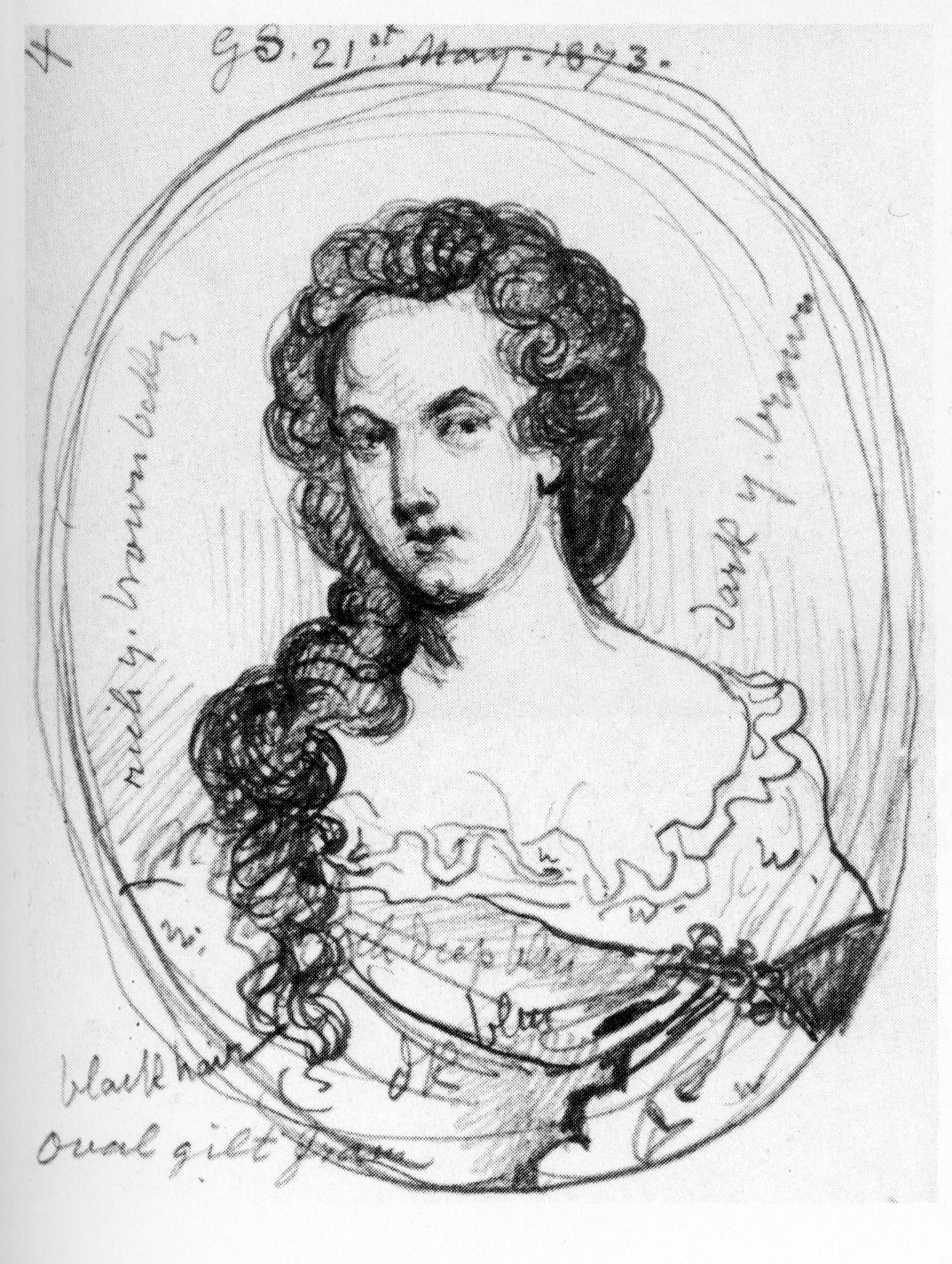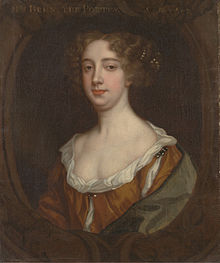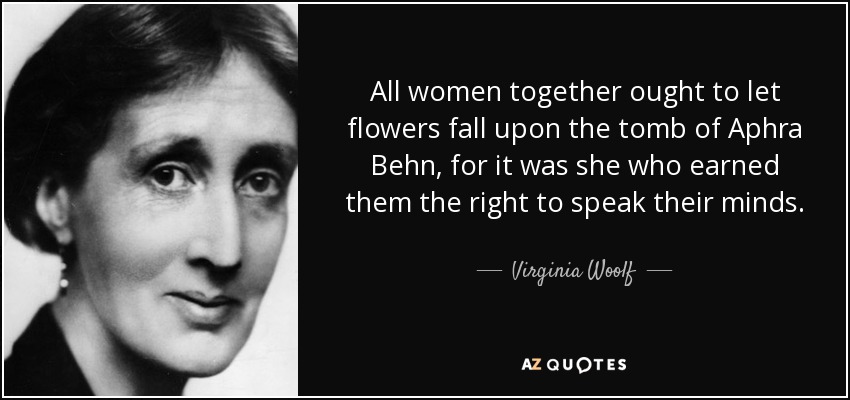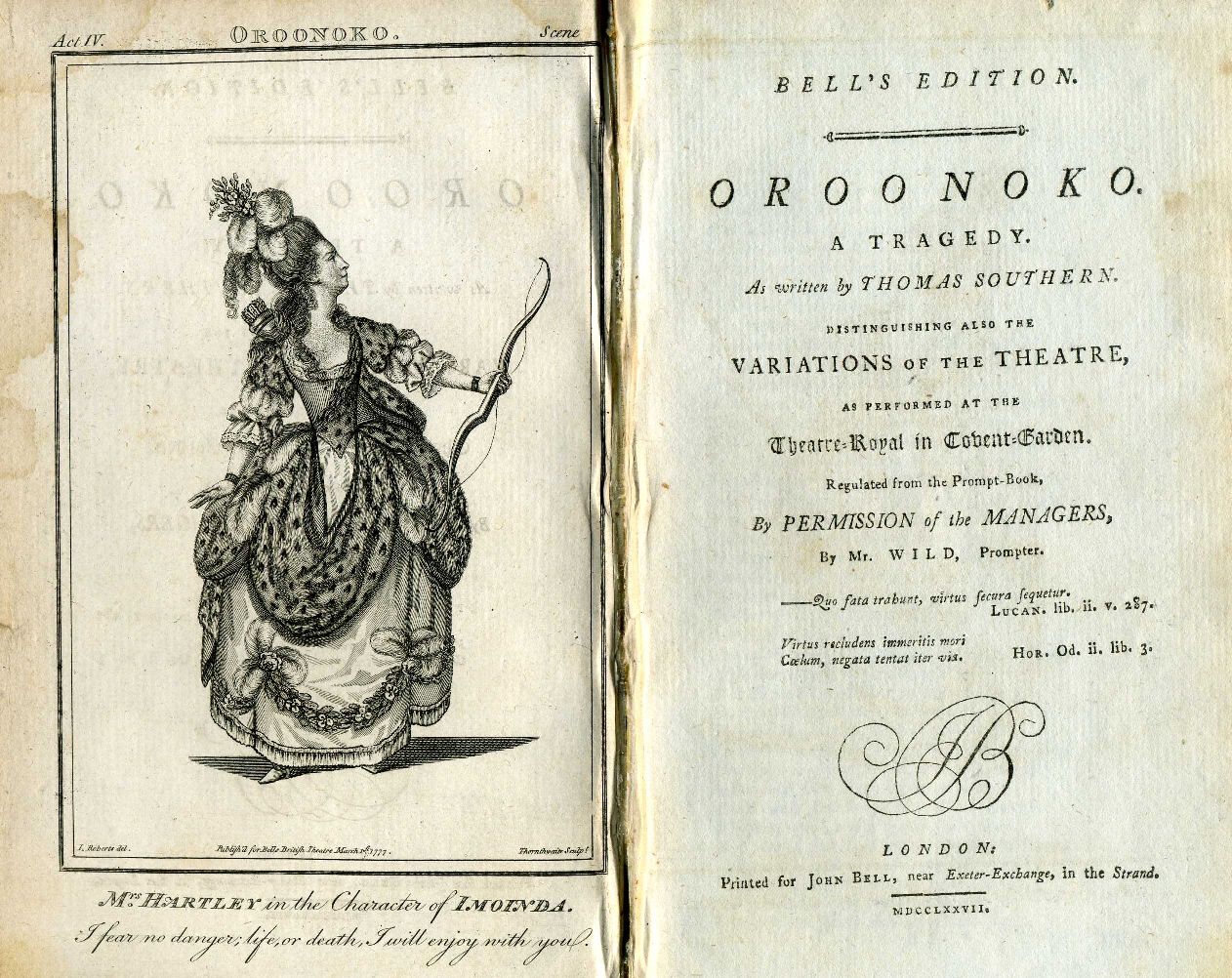And if you’re just now asking yourself “Who in the world is Aphra Behn?” then this is surely the blog for you!

When I was at University I took a course on the Renaissance/Restoration poets, and completely fell in love with Ms. Behn and John Wilmot, the Earl of Rochester. For those of you that don’t know, Restoration authors such as Aphra (sounds odd, but will use it anyway) and Rochester wrote in the time period of (roughly) 1660-1689. This was an interesting period of time, as Charles II had just been restored to the throne of England, and the focus in literature and poetry was on simplicity and the interesting mingling of human reasoning and natural passions. This gigantic shift from the Romantic form of literature seemed to happen almost overnight. And who was in the very throes of it? Why, Ms. Aphra Behn, of course!
Aphra Behn was born sometime in 1640, being baptized in December of that same year. Not much is known about Behn’s early life – which many believe she wanted, but being purposefully vague and misleading on such facts. Her biographer Janet Todd wrote that Behn “has a lethal combination of obscurity, secrecy and staginess which makes her an uneasy fit for any narrative, speculative or factual. She is not so much a woman to be unmasked as an unending combination of masks.” And certainly she was a mystery – she sometimes wrote under the pen name “Astrea” and though she was a well-known figure in the literary world, her life was a mystery to many.
 As a stout Stuart supporter, Behn became attached to the royal court after King Charles II came back into power in 1660. Now we get into the exciting (and more traceable) details of this woman’s life – in 1666 her connections to the crown landed her a job as a spy during the Second Anglo-Dutch War and she arrived in the Netherlands in July of that year. However, her time there did not pan out as planned, as Charles II was extremely neglectful of payments – and Behn was forced to return to England after having to pawn some of her jewelry in order to live abroad. After her return to England, she began working as a playwright (though reportedly had written poetry prior to this job) for the King’s and Duke’s Companies in London. Her work as a scribe was popular, and her plays began to be seen on the stage in 1670 with The Forc’d Marriage and 1671 with The Amorous Prince. After her third play, The Dutch Lover, was noted a flop, Behn traveled for three years before settling down once again to write – this time more comical works that proved infinitely more popular than her earlier works. The most popular and well-known of which is, of course, The Rover – premiering in 1677 and featuring a group of well-bred Englishmen’s amorous adventures in Naples at Carnival time.
As a stout Stuart supporter, Behn became attached to the royal court after King Charles II came back into power in 1660. Now we get into the exciting (and more traceable) details of this woman’s life – in 1666 her connections to the crown landed her a job as a spy during the Second Anglo-Dutch War and she arrived in the Netherlands in July of that year. However, her time there did not pan out as planned, as Charles II was extremely neglectful of payments – and Behn was forced to return to England after having to pawn some of her jewelry in order to live abroad. After her return to England, she began working as a playwright (though reportedly had written poetry prior to this job) for the King’s and Duke’s Companies in London. Her work as a scribe was popular, and her plays began to be seen on the stage in 1670 with The Forc’d Marriage and 1671 with The Amorous Prince. After her third play, The Dutch Lover, was noted a flop, Behn traveled for three years before settling down once again to write – this time more comical works that proved infinitely more popular than her earlier works. The most popular and well-known of which is, of course, The Rover – premiering in 1677 and featuring a group of well-bred Englishmen’s amorous adventures in Naples at Carnival time.

Behn continued to write “ferociously”, as Todd notes. Over her (somewhat short) lifetime, Behn would write and stage 19 plays and translate/author other essays and poetry. She became one of the first “prolific, high-profile female dramatists in Britain” and was one of the most productive playwrights in Great Britain, second only to Poet Laureate John Dryden (Todd). She became friendly with the other playwrights and literary greats of the day, and moved in interesting circles for a woman of the times. As one of the first women to earn her living solely from writing, we women today have a great deal to thank her for!
 Publishing her famous novel Oroonoko just a year before her death in 1688, Behn truly wrote until her health completely deteriorated. Though she died at age 48 in relative poverty, Behn was buried in Westminster Abbey under her tombstone which reads, “Here lies a Proof that Wit can never be Defence enough against Mortality.” (Hilarious even in death…) Happy Birthday to this early feminist!
Publishing her famous novel Oroonoko just a year before her death in 1688, Behn truly wrote until her health completely deteriorated. Though she died at age 48 in relative poverty, Behn was buried in Westminster Abbey under her tombstone which reads, “Here lies a Proof that Wit can never be Defence enough against Mortality.” (Hilarious even in death…) Happy Birthday to this early feminist!

